
Engadin: Switzerland's Alpine Paradise
Discover the stunning alpine landscapes and cultural treasures of Engadin, Switzerland's hidden gem, offering year-round activities from skiing in St. Moritz to hiking in lush valleys.
Nestled in the southeastern corner of Switzerland, Engadin is a breathtaking region that promises an unforgettable experience for every traveler. Renowned for its stunning alpine scenery, picturesque villages, and crystal-clear lakes, Engadin offers a perfect blend of natural beauty and cultural richness. Whether you're an outdoor enthusiast or a lover of history and tradition, this destination caters to all tastes and interests. Engadin is divided into two main areas: the Upper Engadin and the Lower Engadin. The Upper Engadin is home to the famous resort town of St. Moritz, known for its luxury hotels, world-class skiing, and glamorous atmosphere. Visitors can enjoy a range of winter sports, from ice skating to snowboarding, or take a scenic train ride on the Bernina Express, which offers spectacular views of the Swiss Alps. During the summer, the region transforms into a hiker's paradise with countless trails that lead through lush meadows, dense forests, and past sparkling lakes. The Lower Engadin, on the other hand, is characterized by its charming villages, traditional architecture, and a slower pace of life. Here, you can explore the quaint streets of Scuol, visit the ancient Tarasp Castle, or relax in one of the area's natural thermal baths. The Lower Engadin also boasts numerous opportunities for outdoor activities, including biking, fishing, and paragliding. Regardless of the season, Engadin's pristine landscapes and rich cultural heritage make it a must-visit destination in Switzerland.
Local tips in Engadin
- For the best skiing experience, visit St. Moritz between December and March.
- Take the Bernina Express for a scenic train journey with breathtaking views.
- Explore the thermal baths in Scuol for a relaxing experience.
- Visit during the summer months for excellent hiking and biking opportunities.
- Try local Engadin specialties like Bündner Nusstorte and Capuns.
Engadin: Switzerland's Alpine Paradise
Nestled in the southeastern corner of Switzerland, Engadin is a breathtaking region that promises an unforgettable experience for every traveler. Renowned for its stunning alpine scenery, picturesque villages, and crystal-clear lakes, Engadin offers a perfect blend of natural beauty and cultural richness. Whether you're an outdoor enthusiast or a lover of history and tradition, this destination caters to all tastes and interests. Engadin is divided into two main areas: the Upper Engadin and the Lower Engadin. The Upper Engadin is home to the famous resort town of St. Moritz, known for its luxury hotels, world-class skiing, and glamorous atmosphere. Visitors can enjoy a range of winter sports, from ice skating to snowboarding, or take a scenic train ride on the Bernina Express, which offers spectacular views of the Swiss Alps. During the summer, the region transforms into a hiker's paradise with countless trails that lead through lush meadows, dense forests, and past sparkling lakes. The Lower Engadin, on the other hand, is characterized by its charming villages, traditional architecture, and a slower pace of life. Here, you can explore the quaint streets of Scuol, visit the ancient Tarasp Castle, or relax in one of the area's natural thermal baths. The Lower Engadin also boasts numerous opportunities for outdoor activities, including biking, fishing, and paragliding. Regardless of the season, Engadin's pristine landscapes and rich cultural heritage make it a must-visit destination in Switzerland.
When is the best time to go to Engadin?
Iconic landmarks you can’t miss
Swiss National Park
Explore the breathtaking landscapes and diverse wildlife of Swiss National Park, Switzerland's only national park, for an unforgettable outdoor adventure.

Schloss Tarasp
Explore the enchanting Schloss Tarasp, a historic castle with stunning views and a captivating art museum in the heart of Switzerland's Engadin region.
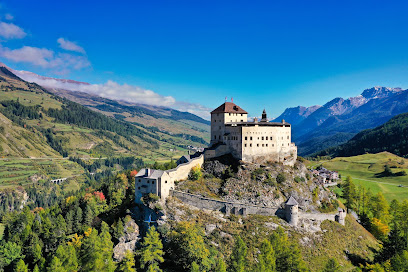
Segantini Museum
Explore the profound beauty of Swiss landscapes through the masterful works of Giovanni Segantini at the Segantini Museum in St. Moritz.

Leaning Tower of St. Moritz
Explore the Leaning Tower of St. Moritz, a historic landmark offering stunning alpine views and a glimpse into Switzerland's medieval past.

Engadin St. Moritz Mountains
Discover the breathtaking beauty of the Engadin St. Moritz Mountains, a premier destination for skiing, hiking, and luxury relaxation in the Swiss Alps.

Boval Hut
Discover the scenic Boval Hut, a mountain cabin offering stunning views and cozy lodging above Morteratsch Glacier in the breathtaking Swiss Alps.

Engadiner Museum
Discover the rich heritage of the Engadin Valley at the Engadiner Museum in St. Moritz, where art and tradition come alive in the heart of the Swiss Alps.

Heidi's-Hut
Experience the charm of Heidi's Hut in St. Moritz, where Swiss tradition meets breathtaking alpine adventure in a quaint and cozy setting.

Historic Hotel Chesa Salis
Discover the charm and history of the Historic Hotel Chesa Salis in Bever, where luxury meets breathtaking Alpine scenery.

Val Roseg
Explore Val Roseg, a stunning hiking area in the Swiss Alps, offering breathtaking views, diverse trails, and a perfect escape into nature's serenity.

Chesa Futura
Discover Chesa Futura, St. Moritz's architectural masterpiece, seamlessly blending modern design with breathtaking Alpine views.
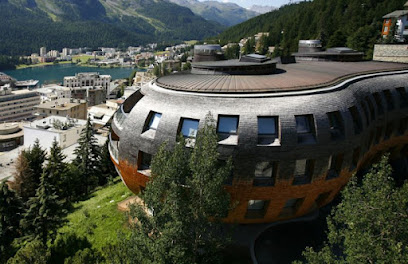
Chamanna da Boval CAS
Discover the tranquility and breathtaking views at Chamanna da Boval, your ideal mountain cabin retreat in the Swiss Alps.

Engadin St. Moritz Tourismus
Explore St. Moritz and the Engadin region with expert guidance from the Tourist Information Center, your gateway to unforgettable adventures in the Swiss Alps.

Unter Engadin
Explore Unter Engadin: A breathtaking ravine in the Swiss Alps boasting adventure, tranquility, and stunning natural beauty.

La Chesa Engiadinaisa
Experience the beauty of the Swiss Alps at La Chesa Engiadinaisa, a cozy lodging retreat in Sils im Engadin, perfect for relaxation and outdoor adventures.

Unmissable attractions to see
Swiss National Park
Explore the breathtaking beauty of Swiss National Park, a paradise for outdoor enthusiasts and nature lovers in the heart of the Swiss Alps.

Kreisviadukt von Brusio
Explore the stunning Kreisviadukt von Brusio, a UNESCO World Heritage site and a marvel of Swiss engineering in the heart of the Alps.
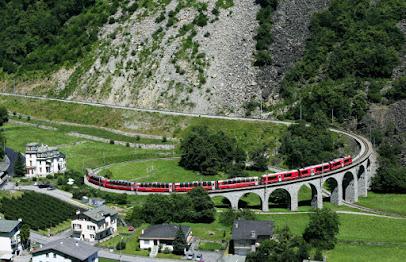
Segantini Museum
Explore the Segantini Museum in St. Moritz, dedicated to the captivating works of Giovanni Segantini amidst breathtaking Alpine scenery.

Leaning Tower of St. Moritz
Experience the Leaning Tower of St. Moritz, a historic bell tower surrounded by breathtaking alpine scenery in the heart of the Swiss Engadin region.

St. Moritz-Celerina Olympic Bobrun
Discover the adrenaline-pumping St. Moritz-Celerina Olympic Bobrun, a historic bobsled track offering thrilling rides and breathtaking alpine scenery.

Engadin St. Moritz Mountains
Explore the breathtaking beauty and adventure of Engadin St. Moritz Mountains, a year-round destination for skiing, hiking, and unforgettable alpine experiences.

Morteratsch Glacier
Explore the majestic Morteratsch Glacier in the Swiss Alps—an unforgettable destination for nature lovers and adventure seekers.

Nietzsche-Haus
Explore the legacy of Friedrich Nietzsche at Nietzsche-Haus in Sils im Engadin, a historical museum dedicated to the philosopher's life and works.

Engadiner Museum
Explore the rich history and vibrant art of the Engadin region at the Engadiner Museum in St. Moritz, a cultural gem waiting to be discovered.

Heidi's-Hut
Discover the enchanting world of Heidi's Hut in St. Moritz, where Swiss folklore comes alive against a backdrop of stunning Alpine beauty.

Chamanna Cluozza
Experience the charm of Chamanna Cluozza, a quaint mountain cabin in Zernez, perfect for relaxing amidst breathtaking alpine scenery.

Holzbrücke
Explore the stunning Holzbrücke in St. Moritz - a picturesque wooden bridge offering breathtaking views and a touch of Swiss heritage amidst nature's beauty.

Forum Paracelsus
Discover Forum Paracelsus, a unique blend of history and wellness in the heart of St. Moritz, Switzerland, where ancient bathing traditions meet modern relaxation.

Pontresina Tourist Information
Experience the enchanting charm and breathtaking beauty of Pontresina, the perfect Alpine getaway in Switzerland's stunning Engadin Valley.
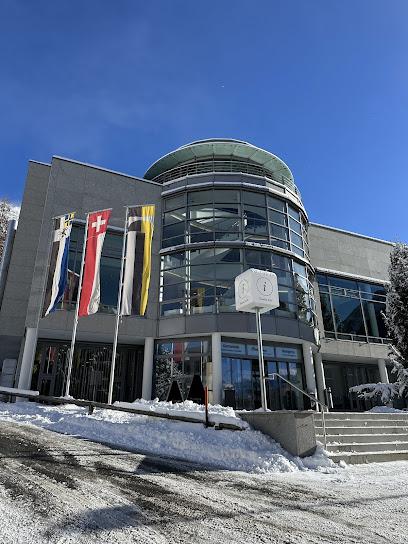
Grand Tour of Switzerland - Photo Spot Engadine St. Moritz
Explore the breathtaking landscapes and rich cultural heritage of Engadine St. Moritz, a must-visit destination in the Swiss Alps.

Essential places to dine
Pier 34
Experience exquisite Italian and Swiss cuisine at Pier 34 in St. Moritz - where alpine charm meets culinary excellence.

La Stalla Restaurant Pizzeria
Experience authentic Swiss and Italian cuisine at La Stalla Restaurant Pizzeria in scenic St. Moritz.

Restaurant Piste 21
Experience authentic Swiss cuisine amidst breathtaking alpine scenery at Restaurant Piste 21 in Samedan.

Restaurant Engiadina
Experience authentic Swiss cuisine at Restaurant Engiadina in St. Moritz – where tradition meets breathtaking alpine views.

Cresta Run
Experience delicious Swiss cuisine and authentic Italian pizzas at Cresta Run in Celerina/Schlarigna amidst stunning alpine scenery.

Veltlinerkeller
Experience authentic Swiss cuisine at Veltlinerkeller in St. Moritz - where tradition meets alpine charm.
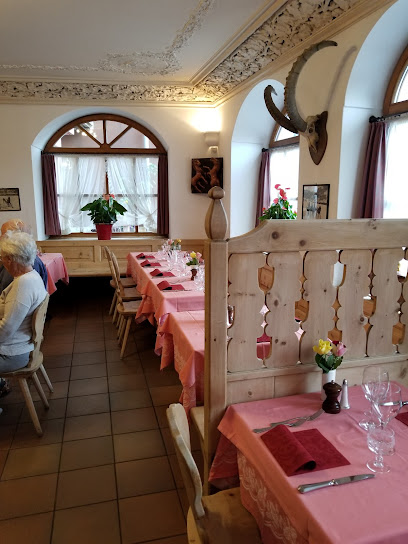
Bo's Co Restaurant
Experience exquisite Swiss cuisine at Bo's Co Restaurant in Celerina - where culinary tradition meets modern flair amidst stunning alpine views.

Restaurant Acla
Experience authentic Italian flavors amidst the stunning landscapes of St. Moritz at Restaurant Acla – your destination for delicious pizza and Swiss cuisine.

La Scarpetta
Experience authentic Italian flavors at La Scarpetta in St. Moritz - where every dish tells a story.

Restorant Uondas
Savor authentic Swiss cuisine at Restorant Uondas in Celerina/Schlarigna, where tradition meets modern flair against stunning alpine scenery.

Restaurant & Bar Marguns
Experience authentic Swiss cuisine with breathtaking views at Restaurant & Bar Marguns in Celerina/Schlarigna.

Chesa Veglia Pizzeria Heuboden
Discover exquisite pizzas in the heart of St. Moritz at Chesa Veglia Pizzeria Heuboden - where culinary tradition meets alpine charm.

Restaurant Piz Nair 10'000 feet
Elevate your dining experience at Restaurant Piz Nair with breathtaking Alpine views and authentic Swiss cuisine at 10,000 feet.

Chesa al Parc
Discover Chesa al Parc: A top-rated Swiss restaurant in St. Moritz offering exquisite cuisine and breathtaking mountain views.

Paradiso Mountain Club & Restaurant
Experience culinary excellence at Paradiso Mountain Club & Restaurant in St. Moritz - where alpine charm meets gourmet cuisine.

Markets, malls and hidden boutiques
Coop Supermarkt Zernez
Experience the convenience and local charm at Coop Supermarkt Zernez, your go-to spot for Swiss groceries and essentials in the stunning Zernez area.

Willy Sport
Explore Zuoz with Willy Sport: Your premier destination for bicycle rentals, ski gear, and expert outdoor advice in the Swiss Alps.

Willy Sport/ Golf Shop
Discover Willy Sport in Zuoz for all your skiing and outdoor adventure needs, featuring expert advice, ski repairs, and equipment rentals in a stunning alpine setting.

Engadin Bikes
Discover the beauty of the Engadin Valley by bike at Engadin Bikes in St. Moritz, Switzerland. Perfect for all cycling enthusiasts.

Engiadina Antik
Explore Engiadina Antik in Zernez, where history comes alive through a captivating collection of antiques and vintage treasures.

Lüthi & Co.
Discover unique souvenirs and Swiss craftsmanship at Lüthi & Co. in St. Moritz, where every gift tells a story.
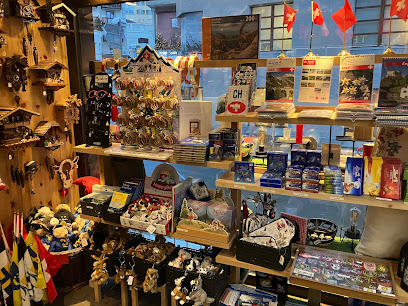
Butia Treffpunkt Müller
Explore Butia Treffpunkt Müller in Susch for a unique grocery shopping experience filled with local flavors and community spirit.

Boutique Vulpius
Explore the charm of Boutique Vulpius in Pontresina, your destination for unique Swiss crafts, needlework, and exquisite wool products.

Swiss Corner St. Moritz GmbH
Explore Swiss Corner St. Moritz for authentic souvenirs that embody the essence of Switzerland's rich culture and craftsmanship.
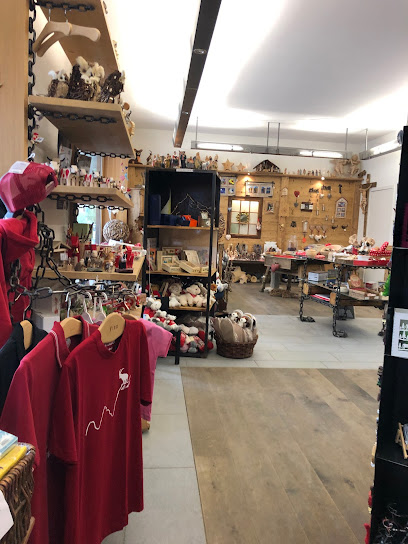
Cartier
Experience the pinnacle of luxury shopping at Cartier in St. Moritz, offering exquisite jewelry, watches, and fashion accessories in a stunning alpine setting.
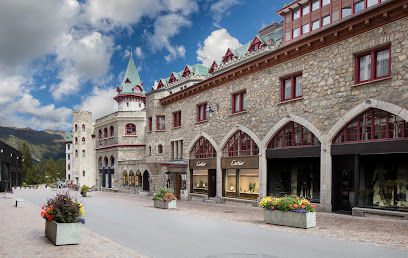
Butia Tradiziun
Discover the charm of Swiss craftsmanship and culture at Butia Tradiziun, your go-to gift shop in Samedan for unique souvenirs.

Mountain Shop Aventüras
Discover the best outdoor gear and expert advice at Mountain Shop Aventüras in Zernez, your gateway to Swiss alpine adventures.

Butietta
Explore Butietta, a charming gift shop in Pontresina, offering unique souvenirs and local products to remember your Swiss adventure.

Butia Magni
Discover the essence of Swiss culture at Butia Magni, a charming gift shop in Zuoz offering unique clothing and thoughtful gifts for every traveler.

Heimatkunst
Explore Heimatkunst in Sils im Engadin/Segl, where Swiss craftsmanship meets charming gifts for an unforgettable shopping experience.

Essential bars & hidden hideouts
Bobby's Pub
Experience the charm of Bobby's Pub in St. Moritz, where delicious food, refreshing drinks, and a lively atmosphere await you.

Stübli St. Moritz
Experience the warmth of Swiss hospitality at Stübli St. Moritz, a charming pub nestled in the stunning alpine scenery, perfect for unwinding after a day of adventure.

Paradiso Mountain Club & Restaurant
Discover culinary excellence amidst breathtaking alpine views at Paradiso Mountain Club & Restaurant in St. Moritz, Switzerland.

Mountain Café Lej da la Pêsch
Discover the charm of Mountain Café Lej da la Pêsch in St. Moritz, where breathtaking views meet delightful Swiss cuisine in a cozy alpine setting.

quattro BAR
Discover Quattro BAR in St. Moritz, where culinary delights meet stunning alpine views in a welcoming atmosphere.

Bar Finale
Experience the charm of Bar Finale in Celerina, where cozy ambiance meets a delicious drink menu in the stunning Swiss Alps.

CAFÉ BELMONT
Café Belmont: Experience the cozy ambiance and exquisite drinks of St. Moritz's favorite bar in the heart of the Swiss Alps.
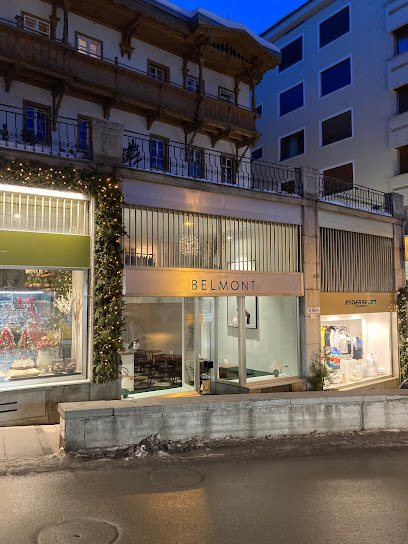
Bar Incontro da Lele
Experience the warm ambiance and delightful drinks at Bar Incontro da Lele, a must-visit bar in the heart of Celerina, Switzerland.
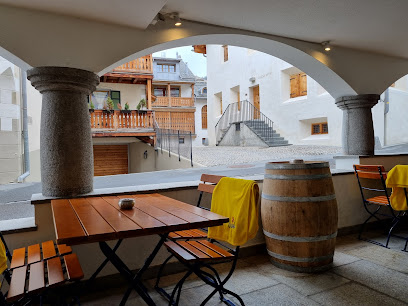
Pianobar
Experience the charm of St. Moritz at Pianobar, where exquisite cocktails meet enchanting live music in a cozy atmosphere.

Roo Bar St. Moritz
Experience the chic atmosphere and exquisite drinks at Roo Bar St. Moritz, the perfect alpine retreat for relaxation and socializing.

Bar Cetto
Discover Bar Cetto, a cozy bar in Sils im Engadin, offering local drinks and a warm atmosphere perfect for relaxation after outdoor adventures.

Sportbar
Experience the exhilarating atmosphere of the Sportbar in Pontresina, where sports meet delicious cuisine in a vibrant setting.

La Gondla
Discover La Gondla, a cozy bar and café in St. Moritz, offering delicious drinks, captivating views, and a unique alpine atmosphere.

Sternbar Marguns
Experience breathtaking views and local flavors at Sternbar Marguns, the ideal alpine retreat for relaxation and socializing in Celerina, Switzerland.

Bar Hemingway's Club
Discover the lively nightlife and chic ambiance at Bar Hemingway's Club in St. Moritz, a top spot for unforgettable evenings and exquisite cocktails.

Local Phrases about Engadin
-
- HelloAllegra
[ah-LEH-grah] - GoodbyeSali
[SAH-lee] - YesSì
[see] - NoNa
[nah] - Please/You're welcomePer plaschair
[per PLAH-schair] - Thank youGrazia fitg
[GRAH-tsee-ah feetg] - Excuse me/SorryScusaziun
[skoo-ZAHT-zee-oon] - How are you?Tge chaschel?
[tgeh KHAH-shel] - Fine. And you?Bun. Ed tù?
[boon. ed too] - Do you speak English?Tia parlas englais?
[tee-ah PAR-lahs ahn-GLAIS] - I don't understandEn na chapesch
[ehn nah kha-PEHSH]
- HelloAllegra
-
- I'd like to see the menu, pleaseDesideria vegnir a vesair il menu, per plaschair
[deh-zee-deh-ree-ah veh-nyeer ah veh-SAI-eer eel MEH-noo, per PLAH-schair] - I don't eat meatEn mangi nagina carn
[ehn MAHN-jee nah-GEE-nah karn] - Cheers!Salut!
[sah-LOOT] - I would like to pay, pleaseDesideria pagar, per plaschair
[deh-zee-deh-ree-ah pah-GAHR, per PLAH-schair]
- I'd like to see the menu, pleaseDesideria vegnir a vesair il menu, per plaschair
-
- Help!Agiu!
[AH-joo] - Go away!Vat enavos!
[vaht eh-NAH-vohs] - Call the Police!Telefonai la polizia!
[teh-leh-foh-NAI lah poh-LEE-tsyah] - Call a doctor!Telefonai in medich
[teh-leh-foh-NAI een MEH-deekh] - I'm lostEn m'hai pers
[ehn mye pehrs] - I'm illEn sun mals
[ehn soon mahls]
- Help!Agiu!
-
- I'd like to buy...Desideria cumprar...
[deh-zee-deh-ree-ah koom-PRAR] - I'm just lookingEn sun betg a tschertgar
[ehn soon betg ah chayrt-GAHR] - How much is it?Quanta costa?
[KWAHN-tah KOH-stah] - That's too expensiveQuai è massa car
[kwai eh MAH-sah kahr] - Can you lower the price?Tias pudais far il preis pli bass
[tee-ahs poo-DAIS fahr eel price plee bahs]
- I'd like to buy...Desideria cumprar...
-
- What time is it?Tgi'ura è?
[tjee-OOR-ah eh] - It's one o'clockEra las ina
[EH-rah lahs EE-nah] - Half past (10)Miezdi
[MYEHTS-dee] - MorningDamaun
[DAH-mown] - AfternoonSera
[SAY-rah] - EveningSera
[SAY-rah] - YesterdayIeri
[YEH-ree] - TodayUss
[oos] - TomorrowDamaun
[DAH-mown] - 11
[1] - 22
[2] - 33
[3] - 44
[4] - 55
[5] - 66
[6] - 77
[7] - 88
[8] - 99
[9] - 1010
[10]
- What time is it?Tgi'ura è?
-
- Where's a/the...?Ura è in...
[oo-rah eh een] - What's the address?Qual è l'adressa?
[kwahl eh luh-DREHS-sah] - Can you show me (on the map)?Pudais ti m'inditgar (sin la carta)?
[poo-DAYS tee meen-deets-GAHR (seen lah KAHR-tah)] - When's the next (bus)?Tge datti la proxima (bus)?
[tgeh DAH-tee lah prohk-SEE-mah (boos)] - A ticket (to ....)In bilet (a ....)
[een bee-LET (ah)]
- Where's a/the...?Ura è in...
History of Engadin
-
Engadin, a long high Alpine valley located in the eastern Swiss Alps, has been inhabited since prehistoric times. The name 'Engadin' is derived from the Romansh 'Engiadina', meaning 'Garden of the Inn', referring to the River Inn that flows through the valley. Archaeological evidence suggests that the area was settled as early as the Bronze Age, and the valley has been a key corridor for trade and travel for centuries.
-
During the Roman era, Engadin was part of the province of Raetia. The Romans constructed roads and fortifications to secure their empire's borders and facilitate the movement of troops and goods through the Alps. Remnants of Roman roads and milestones can still be found in the region. Roman culture and language influenced the local population, contributing to the development of the Romansh language.
-
In the Middle Ages, Engadin was under the control of the Bishopric of Chur. The bishops wielded significant power, both spiritually and politically, over the valley and its inhabitants. Numerous churches and monasteries were established, many of which still stand today, such as the iconic Church of San Gian in Celerina. The medieval period also saw the rise of local noble families who controlled various parts of the valley.
-
In the 14th and 15th centuries, Engadin became part of the Free State of the Three Leagues, a confederation of three local leagues formed to counter the influence of the Habsburgs and other external powers. This political entity provided a measure of autonomy and promoted cooperation among the various communities in the valley. The Three Leagues later played a crucial role in the formation of the Swiss Confederation.
-
The Protestant Reformation had a profound impact on Engadin, leading to religious and social changes. The Reformation was embraced by many in the valley, and Engadin became a stronghold of Protestantism. This period saw the construction of new churches and the spread of Reformed ideas. The division between Catholic and Protestant communities also shaped local politics and culture for centuries.
-
The 19th century marked the beginning of Engadin's transformation into a renowned tourist destination. The discovery of mineral springs in St. Moritz in the 1830s attracted visitors seeking health treatments, leading to the establishment of the first hotels. The completion of the Albula Railway in 1904 further facilitated access to the valley, making it a popular destination for the European elite and adventurers attracted by its stunning landscapes and outdoor activities.
-
Engadin, particularly St. Moritz, played a pivotal role in the development of winter sports. The first winter sports resort was established in St. Moritz in the late 19th century, and the area hosted the first European Ice Skating Championships in 1882. St. Moritz also hosted the Winter Olympics in 1928 and 1948. The development of skiing, bobsleigh, and other winter sports cemented Engadin's reputation as a premier winter sports destination.
-
The preservation of Romansh culture and language is a vital aspect of Engadin's identity. Romansh is one of Switzerland's four national languages, and it has deep roots in the valley. Efforts to preserve and promote Romansh include education programs, cultural festivals, and media in the Romansh language. Traditional customs, music, and festivals, such as the Chalandamarz spring festival, continue to be celebrated, reflecting the rich cultural heritage of Engadin.
Engadin Essentials
-
Engadin is located in the canton of Graubünden in southeastern Switzerland. The nearest international airport is Zurich Airport, approximately 200 kilometers away. From Zurich, you can take a train to Chur and then transfer to the scenic Rhaetian Railway, which will take you through the stunning landscapes to St. Moritz, the main town in Engadin. Alternatively, you can drive from Zurich to Engadin, which takes about 2.5 to 3 hours.
-
Public transportation in Engadin is well-developed and reliable. The Rhaetian Railway connects major towns and scenic spots, making it easy to explore the region by train. Buses are also available for local travel within towns and to nearby villages. For more flexibility, consider renting a car; however, be prepared for mountain driving conditions. Biking is another popular option during warmer months, with numerous bike paths and rental services available.
-
The official currency in Switzerland is the Swiss Franc (CHF). Credit and debit cards are widely accepted in hotels, restaurants, and shops. However, it is advisable to carry some cash for smaller establishments, local markets, and rural areas. ATMs are readily available in all major towns and tourist areas in Engadin. Currency exchange services can be found at airports, banks, and some hotels.
-
Engadin is generally a very safe destination for tourists. Crime rates are low, but standard precautions should still be taken. Avoid leaving your belongings unattended and be cautious of pickpockets in crowded areas. There are no specific high-crime areas targeting tourists in Engadin, but it is always advisable to stay vigilant, especially in busy tourist spots.
-
In case of emergency, dial 112 for immediate assistance. Hospitals and medical facilities are available in St. Moritz and other major towns in Engadin. It is recommended to have travel insurance that covers medical emergencies. Pharmacies are available in towns for minor health issues and over-the-counter medications. Always keep emergency contact numbers and your insurance details handy.
-
Fashion: Do dress warmly in layers, especially during the winter months. Avoid wearing overly casual clothing in upscale establishments. Religion: Do respect local religious customs, especially when visiting churches. Public Transport: Do be punctual and respectful to other passengers. Don't be loud or disruptive. Greetings: Do greet people with a friendly 'Grüezi' in Swiss German. Eating & Drinking: Do try local specialties like Swiss fondue and Engadine nut tart. Don’t forget to tip, as it is customary.
-
To experience Engadin like a local, visit the weekly markets where you can buy fresh produce and local crafts. Engage with locals, who are often friendly and willing to share tips about hidden gems in the area. Don’t miss out on the local spa culture—try the mineral baths in Scuol or the thermal baths in St. Moritz. For a unique experience, take a ride on the Bernina Express, which offers one of the most scenic train routes in the world.
Trending Landmarks in Engadin
Nearby Cities to Engadin
-
Things To Do in St. Moritz
-
Things To Do in Arosa
-
Things To Do in St. Anton am Arlberg
-
Things To Do in Balzers
-
Things To Do in Triesenberg
-
Things To Do in Vaduz
-
Things To Do in Schaan
-
Things To Do in Eschen
-
Things To Do in Mauren
-
Things To Do in Gamprin
-
Things To Do in Schellenberg
-
Things To Do in Ruggell
-
Things To Do in Dornbirn
-
Things To Do in Bregenz
-
Things To Do in Locarno











